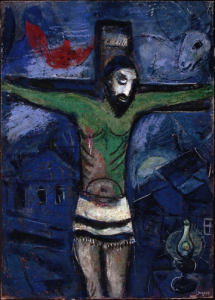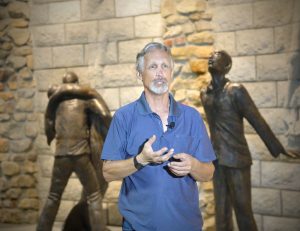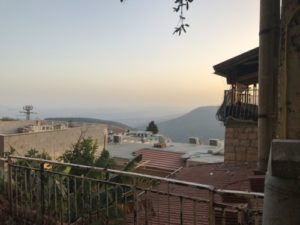Fine Arts

Early Jewish Art
The Second Commandment and Its Interpretations
The Second Commandment, as noted in the Old Testament, warns all followers of the Hebrew god Yahweh, “Thou shalt not make unto thee any graven image.” As most Rabbinical authorities interpreted this commandment as the prohibition of visual art, Jewish artists were relatively rare until they lived in assimilated European communities beginning in the late eighteenth century.
Although no single biblical passage contains a complete definition of idolatry , the subject is addressed in numerous passages, so that idolatry may be summarized as the worship of idols or images; the worship of polytheistic gods by use of idols or images; the worship of trees, rocks, animals, astronomical bodies, or another human being; and the use of idols in the worship of God.
In Judaism, God chooses to reveal his identity, not as an idol or image, but by his words, by his actions in history, and by his working in and through humankind. By the time the Talmud was written, the acceptance or rejection of idolatry was a litmus test for Jewish identity. An entire tractate, the Avodah Zarah (strange worship) details practical guidelines for interacting with surrounding peoples so as to avoid practicing or even indirectly supporting such worship.

Chagall’s Mirror
The Jewishness of Jesus has seldom been rendered more clearly in art than in the crucifixion scenes of Marc Chagall. Of the 31 paintings and 22 works on paper in “Chagall: Love, War and Exile”

Fountain of Tears
ick Wienecke was born in Toronto Canada in 1955. When he was twenty years old, he read the book “Exodus” by Leon Uris that introduced him, for the first time, to the Holocaust, and to the struggle of the Jewish people to have a nation of their own. This was at a time in his life that he was searching for God and he became more and more convinced, that if there is a God, He must have something to do with these Jews and this country Israel; “How could they (the Jewish people) survive the Holocaust and only three years later declare themselves as a nation?”
Rick felt an inner stirring to go and see Israel for himself. In 1977 he left Canada, with the plan to work on a kibbutz as a volunteer for six months.

Artists, Musicians, Mystics, and More… in SFAT (SAFED)
If you love art and music, and especially if you love to study the scripture, Safed (pronounced ‘Sfat’) will feel like home to you. The ancient stone walls and paths take you through a section filled with memories of famous Rabbis and seekers throughout history. In a few hours you can see Rabbis, a certified scribe (sofer), school students, IDF soldiers on break, musicians carrying unusual harps and other instruments, artists, art galleries…
